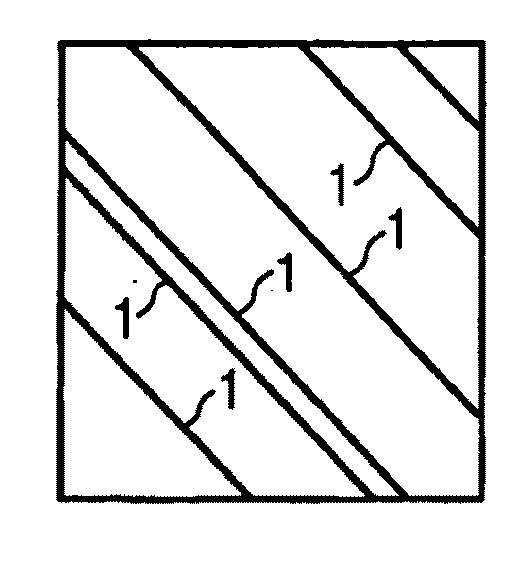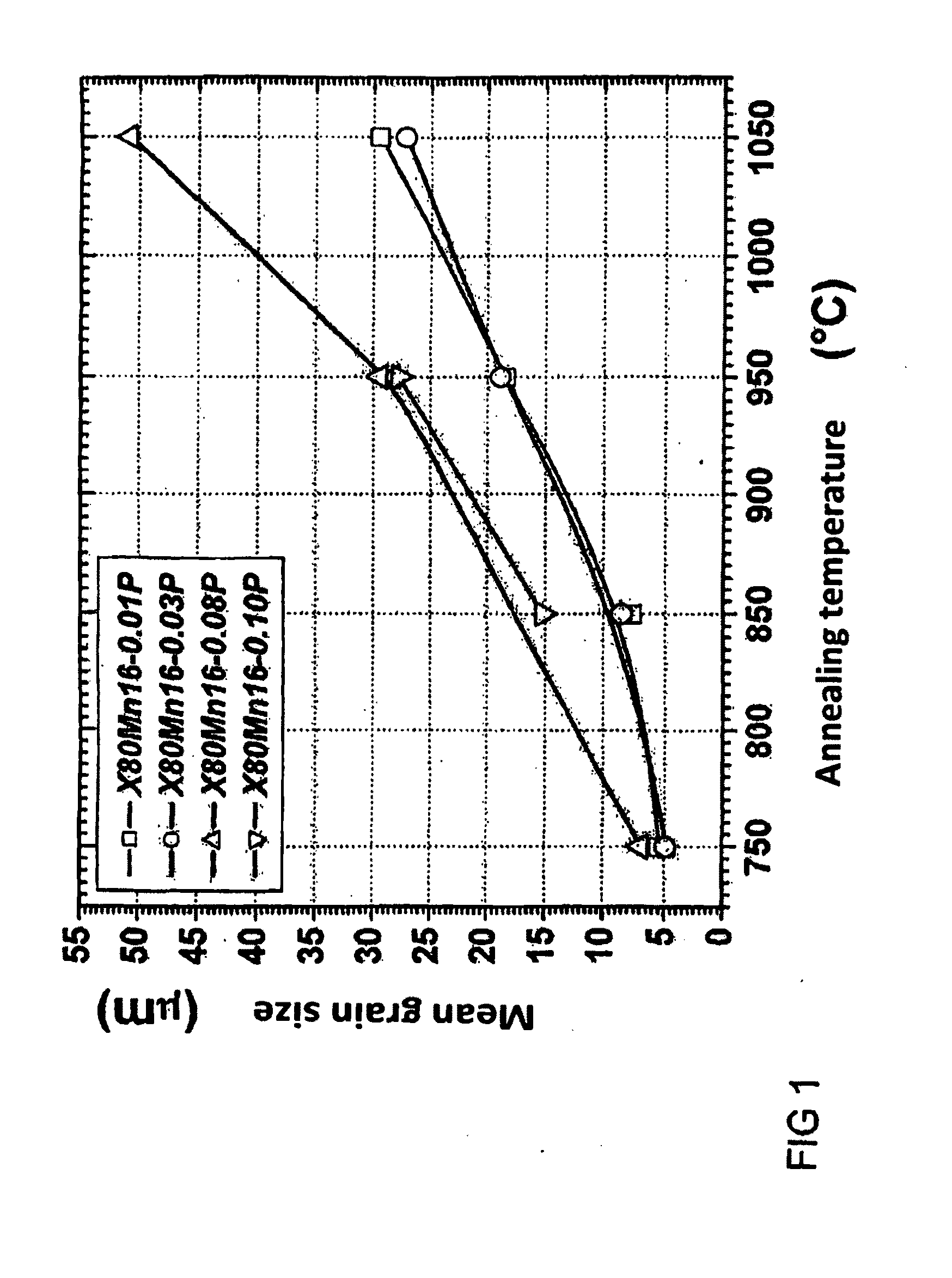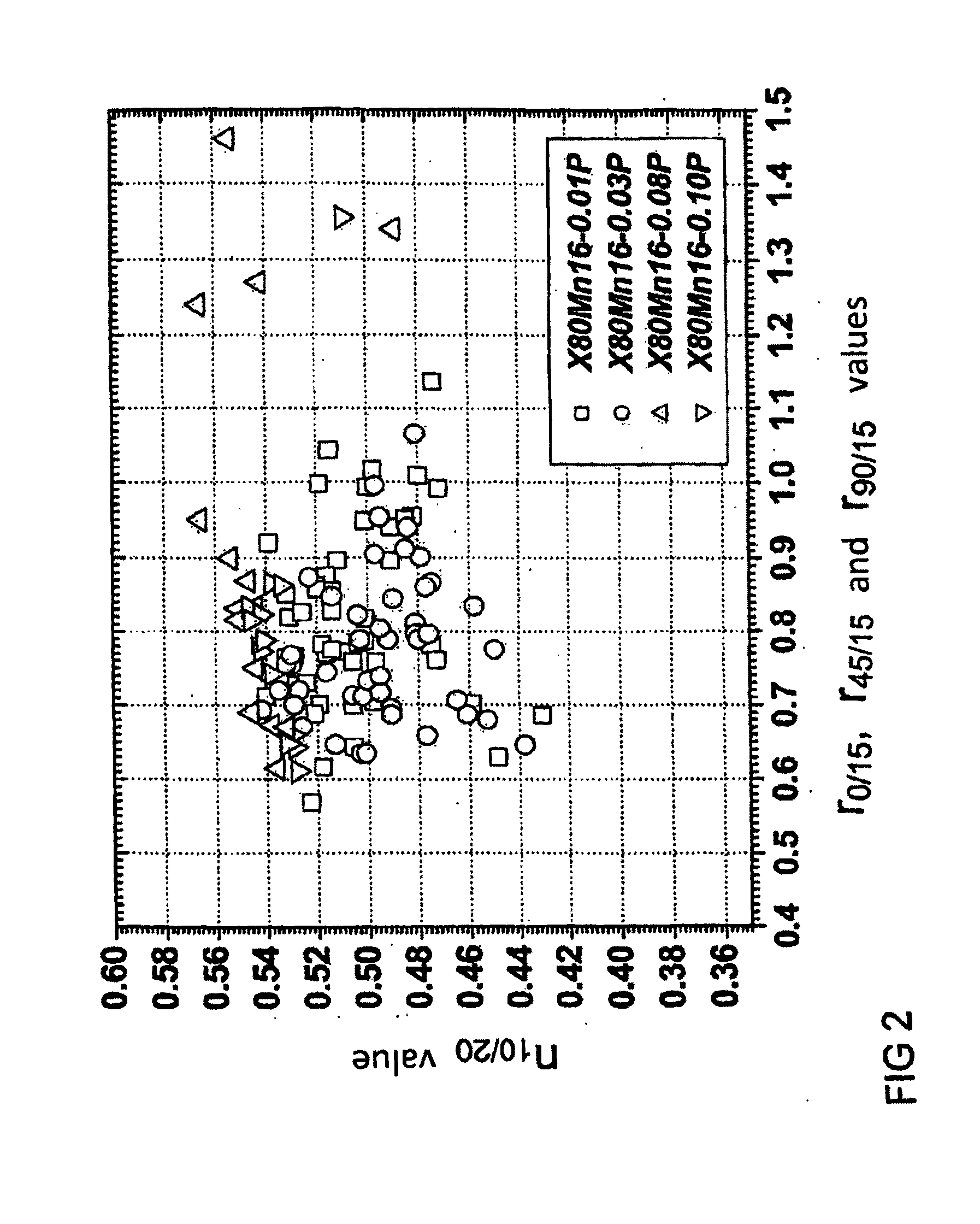Manganese steel strip having an increased phosphorous content and process for producing the same
a manganese steel and phosphorous technology, applied in the field of austenitic manganese steel strips, can solve the problems of silicon impairing the precipitation of carbides, silicon impairing twinning, etc., and achieves the effects of high solid solubility, good solubility of these elements, and high density
- Summary
- Abstract
- Description
- Claims
- Application Information
AI Technical Summary
Benefits of technology
Problems solved by technology
Method used
Image
Examples
Embodiment Construction
[0045]Different possibilities for producing manganese steels according embodiments of the invention will first be described by way of example.
[0046]In a first approach the pig iron is produced in a blast furnace or by a smelting-reduction process, such as Corex or Finex. The Tecnored process is also possible. For example, the pig iron is then converted into steel in a basic oxygen process (for example in a LD (Linz-Donawitz) / BOF (bottom oxygen furnace) process). Vacuum degassing (for example by the Ruhrstahl-Heraeus process (RH)) may be carried out before the steel is cast and a ladle furnace may be used to heat and alloy the molten metal. A second approach, which may be particularly suitable for manganese steels, uses an electric arc furnace (EAF) to produce steel and an AOD converter to decarbonise the liquid steel. A ladle furnace can again be used to heat and alloy the molten metal before the steel is cast.
[0047]The steel thus produced can be processed further by means of differ...
PUM
| Property | Measurement | Unit |
|---|---|---|
| thickness | aaaaa | aaaaa |
| thickness | aaaaa | aaaaa |
| thickness | aaaaa | aaaaa |
Abstract
Description
Claims
Application Information
 Login to View More
Login to View More - R&D
- Intellectual Property
- Life Sciences
- Materials
- Tech Scout
- Unparalleled Data Quality
- Higher Quality Content
- 60% Fewer Hallucinations
Browse by: Latest US Patents, China's latest patents, Technical Efficacy Thesaurus, Application Domain, Technology Topic, Popular Technical Reports.
© 2025 PatSnap. All rights reserved.Legal|Privacy policy|Modern Slavery Act Transparency Statement|Sitemap|About US| Contact US: help@patsnap.com



